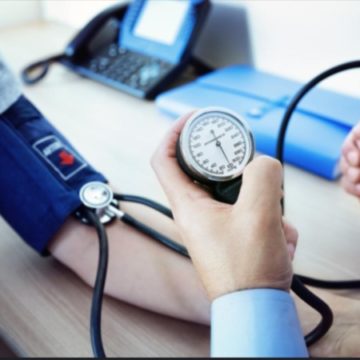
- Hypertension is a condition when the blood pressure becomes too high.
- If not managed, hypertension can lead to complications like heart diseases, stroke, and even death.
- Living a healthy life, such as eating healthy foods, exercising, and taking medications, are some ways to keep blood pressure in check.
With hypertension or high blood pressure, it is essential to manage it to prevent other health complications, like cardiovascular diseases, stroke, and death.
To keep it under control, here are some things you can do.
1. Include more high-fiber containing food in your diet.

High-fiber containing foods like flaxseed have been found in one study to be effective in lowering systolic blood pressure among postmenopausal women with a heart disease history. The women added four tablespoons of flaxseeds to their food daily.
Flaxseed is packed with many nutrients, including fiber, and its omega-3 fatty acid content works to lower blood pressure. Flaxseed can be sprinkled in all your foods, in yogurt for breakfast, in spaghetti sauce for lunch, and even in ice creams.
2. Eat more avocados.

Potassium helps ease the tension in the blood vessel walls resulting in lower blood pressure. When you eat more potassium, more sodium will be removed through the urine. Among the fruits and vegetables, avocados have the most potassium content.
3. Eat dark chocolates.

Chocolates, especially dark ones, can help lower blood pressure through their flavonoid content. Flavonoids keep the arteries flexible, making the blood vessels less stiff and decreasing the pressure within them. In one study published in the Journal of the American Medical Association, it was shown that eating three ounces of dark chocolates every day lowered the blood pressure levels of older people who have isolated systolic hypertension. Isolated systolic hypertension is a kind of hypertension wherein only the upper reading of the blood pressure is high. Also, in one tribe of Panamanian Indians who eat a high-salt diet, they still have normal blood pressure, which people attributed to their massive cocoa consumption.
4. Reduce your caffeine intake.

Limit your caffeine intake, and substitute tea in days you are not drinking coffee. According to one Australian study, increasing tea consumption each day lowered the systolic blood pressure by two points and the diastolic pressure by a point. The systolic pressure is the upper number, while the diastolic pressure is the lower number in a blood pressure reading.
5. Take a walk every day.

Simple exercises like walking every day can already provide a blood-pressure-lowering effect. It was shown in a study involving 168 inactive volunteers who are hypertensives that exercising does have beneficial effects. Japanese researchers asked the volunteers to exercise for different amounts of time weekly for eight weeks at a health club. The volunteer’s blood pressure dropped as much for those who exercised for 30-90 minutes weekly and those who spend 90 minutes of exercise a week.
6. Take your medications.

Regularly taking your medications can help you keep your blood pressure in control and prevent unwanted fluctuations.
7. Monitor your blood pressure.

When you have your blood pressure kit at home, it is easier to manage your high blood pressure. The European Society of Hypertension meeting in 2004 showed that people who monitored their blood pressure at home had lower blood pressure than those who take their blood pressure in a doctor’s office. A study presented in the Journal of the American Medical Association shared that a blood pressure home kit gives a more overall picture of blood pressure than blood pressure measured in a doctor’s clinic.
Source: Reader’s Digest
